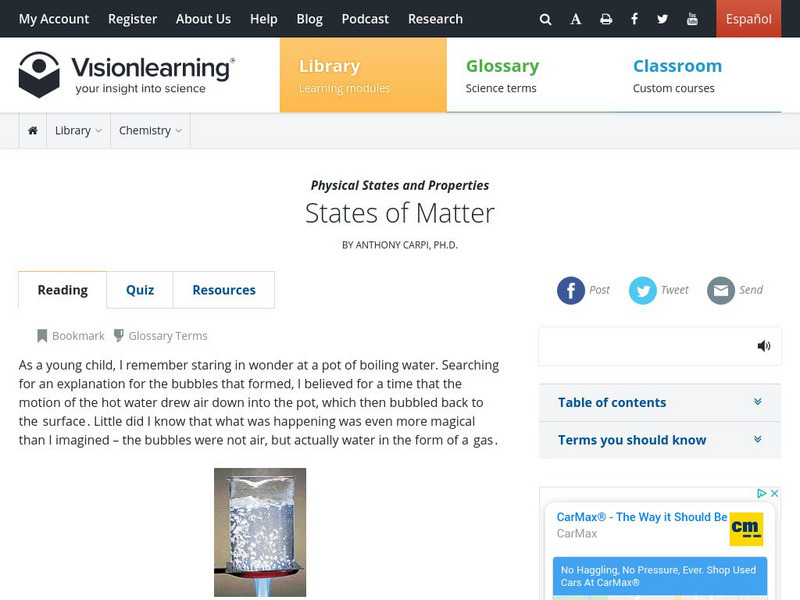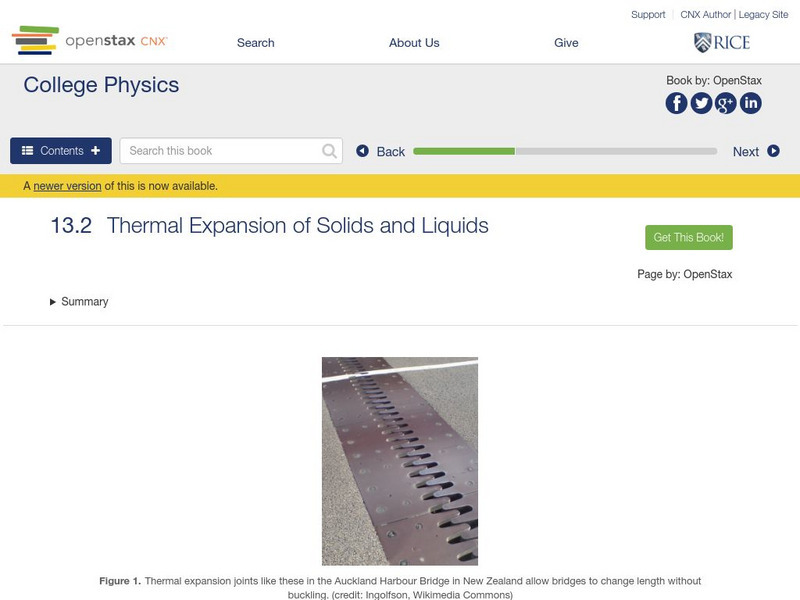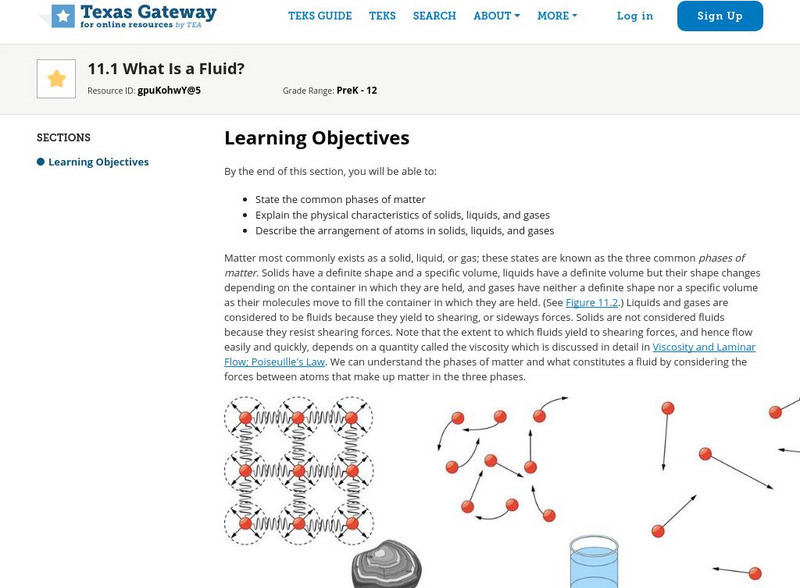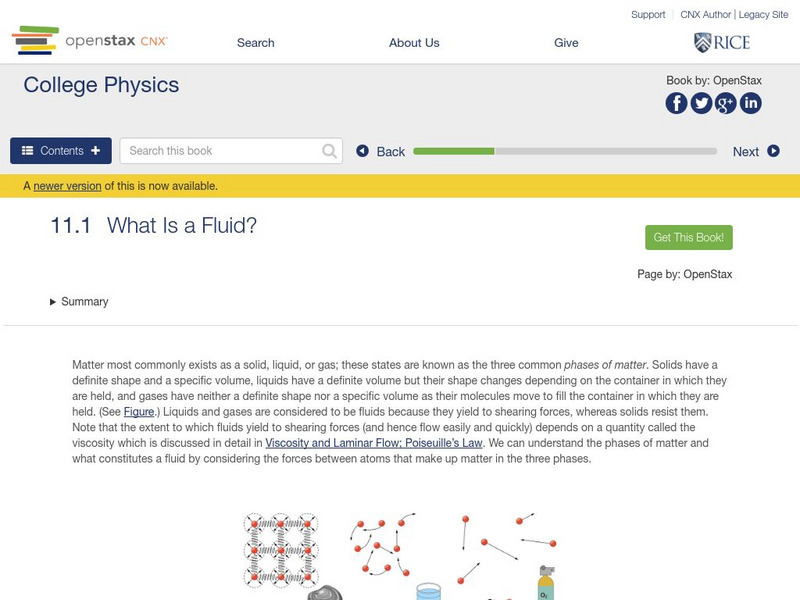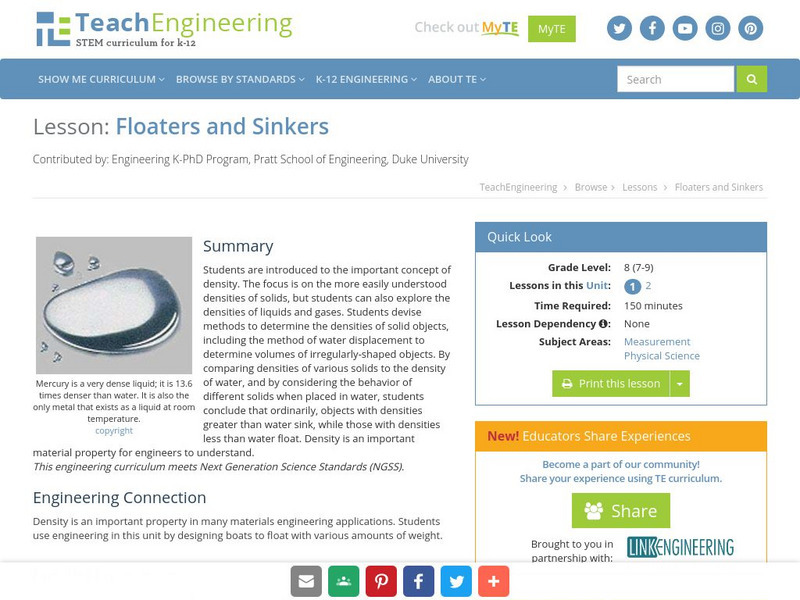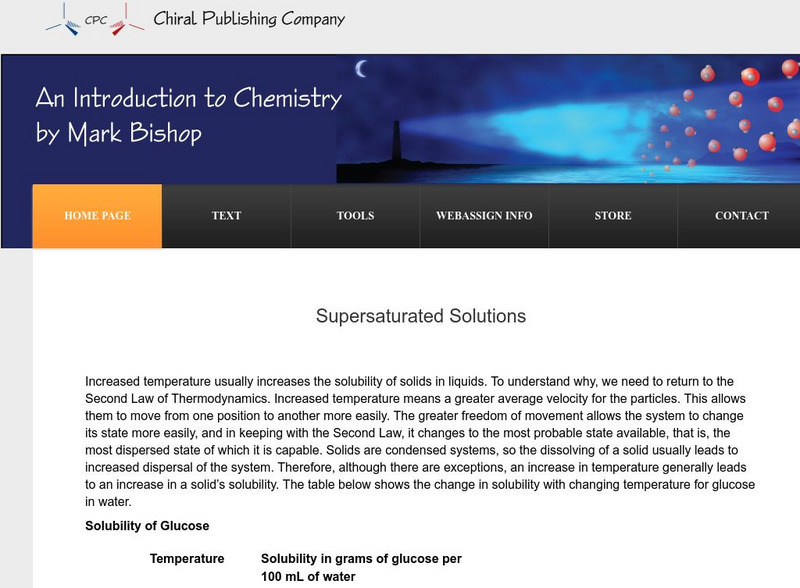Vision Learning
Vision Learning: States of Matter
Did you know the ancient Greeks first identified the three states of matter? Read about how the molecules differ in solids, liquids, gases, and plasma. View photographs and watch how the molecules move in each state. If you're really...
OpenStax
Open Stax: College Physics: Thermal Expansion of Solids and Liquids
Learn about the increase or decrease of size of an object due to thermal expansion in this college textbook section. Understand how to calculate linear and volume expansion of an object as well as thermal stress. Section also includes...
Alabama Learning Exchange
Alex: Which Came First, Ice Cream or Refrigeration?
As students begin their study of states of matter, this hands-on activity demonstrates how the interaction of a solid and a liquid can reverse the initial state of each material.This lesson plan was created as a result of the Girls...
Texas Education Agency
Texas Gateway: Ap Physics: Fluid Statics: What Is a Fluid?
By the end of this section, you will be able to state the common phases of matter; explain the physical characteristics of solids, liquids, and gases; and describe the arrangement of atoms in solids, liquids, and gases.
OpenStax
Open Stax: What Is a Fluid?
From a chapter on Fluid Statics in a Physics textbook. This introductory section of the chapter covers the three common phases of matter, their physical properties, and how atoms are arranged in solids, liquids, and gases. Includes a...
Simon Fraser University
Chem1 Virtual Textbook: Densities of Substances and Materials
As part of a larger site called "Getting started in Chemistry," this site examines various topics related to the densities of substances and materials. Included in the study are properties of solids, liquids and gases, and how density is...
Energy4Me
Energy4me: Fracturing With Gelatin
This activity aims to demonstrate how fracturing fluid, under pressure, is able to create a fissure in the rock layer. Students will be able to see the syrup come out at a high velocity to crack the gelatin. The gelatin, however, will...
Science Struck
Science Struck: How to Find Volume With Water Displacement Method
Tells the story of how Archimedes discovered the Archimedes Principle and his water displacement method for determining the volume and density of an object. Provides an explanation and several examples of how it is done.
PBS
Pbs Learning Media: Phases of Matter: Interactive Lesson
Learn about the three phases of matter, and how the addition and removal of thermal energy (also known as heat) affects them.
Texas Education Agency
Texas Gateway: Phase Changes
Learn how to interpret a phase diagram, explain Dalton's Law, and describe the state of equilibrium between a liquid and a gas, a liquid and a solid, and a gas and a solid. This resource contains in-depth explanations and multiple...
Texas Education Agency
Texas Gateway: Temperature, Kinetic Theory, and the Gas Laws: Phase Changes
By the end of this section, you will be able to interpret a phase diagram; state Dalton's law; identify and describe the triple point of a gas from its phase diagram; and describe the state of equilibrium between a liquid and a gas, a...
TeachEngineering
Teach Engineering: Floaters and Sinkers
This lesson introduces students to the important concept of density. The focus is on the more easily understood densities of solids, but students can also explore the densities of liquids and gases. Students devise methods to determine...
Other
Lunar and Planetary Institute: Explore! Ice Worlds
Features a collection of hands-on activities, investigations, and explorations designed to engage students in learning about ice, both in the solar system and on planet Earth.
Chiral Publishing
Chiral Publishing: An Introduction to Chemistry: Supersaturated Solutions
Learn about how greater temperatures increase the solubility of solids in liquids due to a greater velocity of the particles. A chart helps explain the solubility rate of glucose at different temperatures. Also, find links to textbook...
Museum of Science
The Atom's Family: Mighty Molecules
In this activity, students construct models of molecules using marshmallows and gum drops.
Khan Academy
Khan Academy: Biology: Specific Heat, Heat of Vaporization, and Density of Water
Why does ice float? In this article answer that question by learning about the topics of Specific heat capacity, evaporative cooling, and heat of vaporization of water.
Other popular searches
- Solids Liquids and Gases
- Solids Liquids Gases
- Solids and Liquids
- Solids, Liquids, Gases
- Solids, Liquids and Gases
- Solids Liquids Gas
- Solids Liquids
- Pictures Solids Liquids Gas
- Solids, Liquids, and Gases
- Solids Liquids and Gas
- Solids Liquids Gases Quiz
- Matter Solids Liquids
